Affiliate marketing is one of the most popular ways to earn passive income online. If you’ve ever dreamt of making money while you sleep then affiliate marketing is one of the first strategies you’ll want to look at.
In the UK alone, affiliate marketing contributes 1% to the country’s GDP, according to research from IAB UK – that’s more than the entire agriculture industry.
The same research shows affiliate marketers in the UK earn £15 for every £1 they spend and it’s easy to see why so many people get into the game with that kind of ROI potential on the table.

Don’t get me wrong, I’m not saying affiliate marketing is easy or a golden ticket for getting rich quick. Like anything worth doing in this world, affiliate marketing is a tricky business but, with the right strategy in place, you can join the list of entrepreneurs who make a success of it.
In this guide, you’re going to find everything you need to put this kind of strategy in motion. As long as you’re ready to put in some work and willing to follow all of the steps in this article, you’ve got every chance of making your own affiliate marketing success story.
What is affiliate marketing?
Let’s start by explaining precisely what affiliate marketing is and I’m going to borrow a definition from a highly trusted marketing source to get us started – this time, from HubSpot:
Affiliate marketing is a performance-based marketing tactic in which a retailer, typically an online one, rewards a website with a commission for each customer referred via the website’s promotional activities. The website, often called an affiliate, will only get paid when their promotion results in a transaction.
The Ultimate Guide to Affiliate Marketing, written for HubSpot by Justin Lee
Essentially, affiliate marketing is where a retailer pays a small commission to people (affiliates) who recommend their products to others.
In most cases, this involves sending traffic to a retailer’s website and receiving a commission when those visitors buy the product/service you’re recommending.
There are normally four parties in this process:
- The merchant: The company that creates/sells the product or service.
- The affiliate: The person promoting the product or service.
- Affiliate networks: Online networks where merchants list their affiliate programmes and affiliates go to find them (optional).
- The consumer: The people affiliates recommend products/services to and hopefully end up buying them from the merchant.
When I say affiliate networks are optional I mean affiliates don’t need to use them to run a successful strategy and merchants don’t need to use them to find affiliates – although they can be useful to both parties in certain circumstances.
I’ll explain this in more detail when we come back to affiliate networks later in this guide.
What do the merchants get out of this?
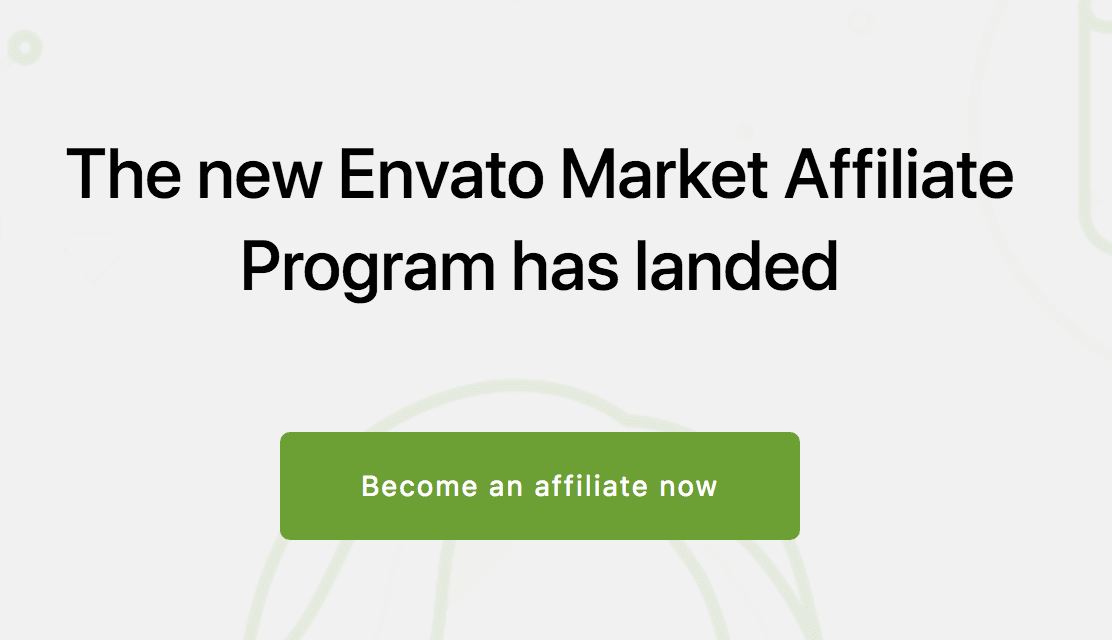
The merchant wants to maximise sales of their products and/or services. With affiliate marketing, they can call upon other people to do the promoting for them and they only need to pay a small fee when someone actually buys from them.
With a large enough network of affiliates promoting their products/services for them, merchants can add an invaluable source of traffic and sales. It’s kind of a win-win strategy, too, because the merchants only pay when there’s a sale.
Likewise, affiliate marketing costs a fraction of what merchants pay per conversion through PPC and all of the time-consuming aspects of content creation and search optimisation are passed on to the affiliate.
What do the affiliates get out of this?
Affiliates get a small commission every time one of the products/services they recommend is bought. The key benefit here is that you can make money without needing to develop your own products – all of that hard work has already been done by the merchants you partner up with.
This doesn’t mean you get a free ride as an affiliate, though. You need to build and manage your website, create a steady stream of high-quality content and bring in enough traffic to make your affiliate venture profitable.
Because you’re only earning a small commission from every sale, you’re going to need to secure a large volume of customers for your partner merchants to pay for your time, effort and initial expenses and then make enough profit on top of that.
What role do affiliate networks play?
Affiliate networks are online repositories where merchants can list their affiliate programmes for affiliates to find and sign up to.
You don’t necessarily need to use networks to get involved in affiliate marketing, though. You’ll find many businesses promote their programme openly on their website and you can apply with them directly.
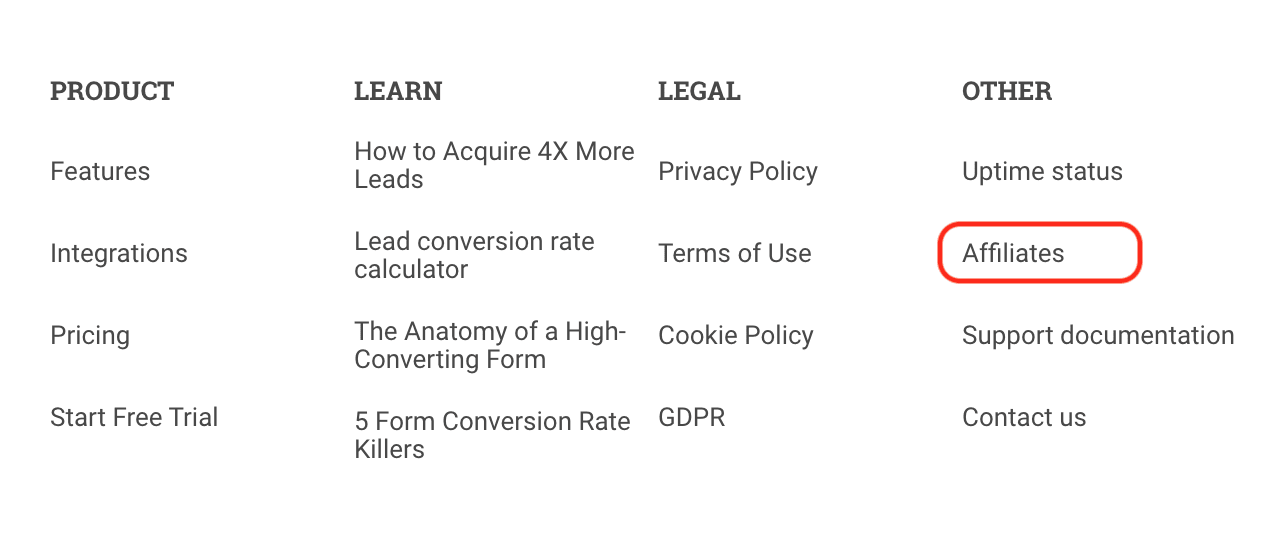
However, networks can speed up the process and some merchants prefer to work with them exclusively to add a layer of security to their programme. Networks are definitely something to look into and we’ll talk about this in more detail later, but they’re not a requirement.
It’s all about the consumers, though
Consumers are the people who ultimately need to buy from the merchant’s website. For this to happen, the affiliate needs to target them with highly relevant content, convince them the merchant is worth buying from and then send them to the merchant’s website where they can complete the purchase.
Not everyone is going to be interested in what the merchant has to sell, of course, so the affiliate’s ability to generate visits from people with a strong interest in the merchant’s offer and a high purchase intent is crucial.
What is an Affiliate Purchase
There are many ways to leverage affiliate marketing but the basic process of a affiliate purchase is as follows:
- You display an advertisment for another store/provider on your blog, website, or video.
- A user clicks the link on your website.
- The user makes a purchase on the affiliate site.
- As the link is unique to you, the transaction is recorded against you.
- You’re then paid a proportion of the sale value.
How does affiliate marketing work?
Now that you’ve got an idea of the basics, let’s take a closer look at how affiliate marketing works. Here’s a quick look at what we’re going to cover in this section:
- Affiliate marketing models: Most programmes pay commissions for each transaction but there are other models you may come across.
- Tracking: How merchants know you are responsible for the sale and the limitations of tracking.
- Getting paid: When is your commission money going to hit your bank account?
- Your expenses: You have to spend money to make money in this game – so what expenses should you expect?
- Step-by-step process: A quick overview of the entire process for affiliate marketers.
By the time you’re done with this section, you’ll understand enough about how affiliate marketing works for us to go into more detail about setting up your own venture and achieve the best performance.
Affiliate marketing payment models
In most cases, affiliates earn a commission when one of their visitors clicks through to a merchant’s website and purchases one of their products. However, there are other affiliate marketing models you might come across:
- Pay-Per-Sale (PPS): The affiliate gets paid for every sale they generate. This is the most common model as it places all responsibility and risk on the affiliate.
- Pay-Per-Lead (PPL): The affiliate gets paid for every lead generated: online form submissions, trial creations, free demo sign-ups or any pre-purchase.
- Pay-Per-Click (PPC): The affiliate gets paid for all clicks/traffic generated, regardless of whether visitors turn into leads of customers. This model is quite rare, though, as all the risk lies with the merchant.
The vast majority of affiliate programmes use the PPS model, which means you’ll normally get paid when your referral traffic actually buys the product or service you’re recommending.
Tracking affiliate marketing traffic
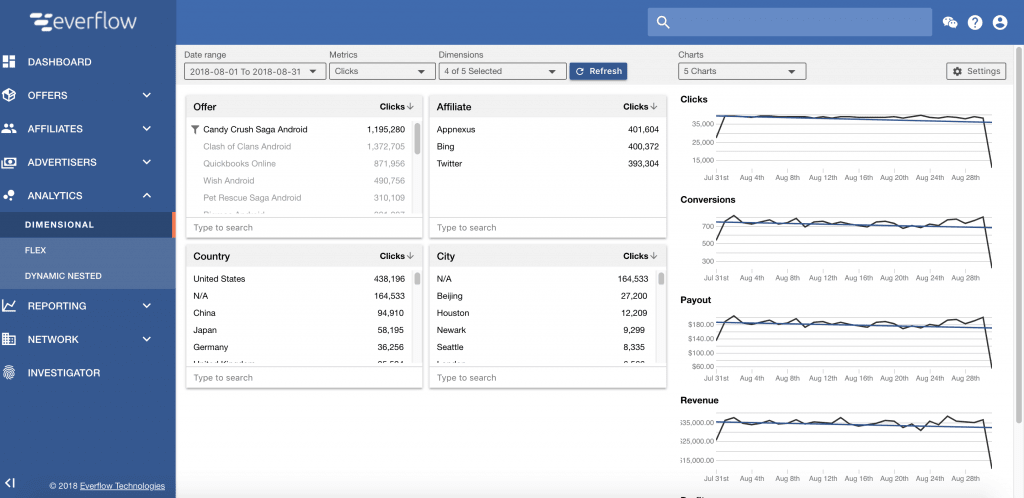
Regardless of what affiliate programme model you sign up to, merchants need a way to know where traffic is coming from. Any given merchant could have hundreds, thousands or even millions of affiliates and none of them are going to get paid unless the merchant knows which one is responsible for each sale.
So how does this work?
Well, when you sign up to an affiliate programme, you’ll be given your own unique ID, which you can add to the end of all of your links for that programme. For example, if you sign up to Amazon Associates, you’ll be given your unique ID number (let’s say 12345) and you’ll add this to the end of every Amazon affiliate link on your site – so they’ll look something like this: amazon.com/?ref=12345.
This tells Amazon that the traffic you’re sending them in yours.
This system isn’t foolproof, though. What happens if you send traffic to one of your partner sites and they don’t make the purchase right away? Instead, they come back to the merchant’s site at a later point and then pay up – aren’t you still responsible for the sale sa you sent them there in the first place?
This depends on the specific programme you’re signed up to, so make sure you understand this before you start working with any merchants. In many cases, you’ll still get a commission when people return to buy later but it might be less than you get for outright sales.
(Keep in mind your merchant might be spending money on remarketing and other strategies to bring these visitors back.)
Either way, the merchant is going to need to track these users with cookies to attribute sales to you and this presents some other potential problems:
- You have no control over how merchants track users.
- Cookies aren’t foolproof either – users can block them, refuse to give consent, delete their cache or use a different device.
- GDPR and ePrivacy regulations make it very obvious to users when brands want to track them with cookies and easy to opt out.
The good news is that reputable merchants have every incentive to accurately attribute sales to your site. They want to know which affiliates are adding the most value to their business and how effective their affiliate programmes are overall.
As long as you understand the limitations of the technology used to track traffic, you shouldn’t have any problems.
When do you actually get paid?
Again, this depends on the affiliate programmes you’re using and you’ll want to make sure you know where you stand before you sign up for anything.
Generally speaking, though, merchants will pay out on either a weekly or monthly basis.
If you’re using affiliate networks then the rules can vary greatly. Most of them have payout thresholds which means you can withdraw money until you’ve got a certain amount in your balance. Normally, this threshold is relatively low (e.g.: £50) so it shouldn’t be a major problem, though.
What expenses do affiliate marketers need to pay?

Your first expense is going to be your website, which is where you’ll publish your content, make your recommendations and build your audience. Right of the bat, this is going to involve the following costs:
- Hosting
- Domain name
- Web design or theme (WordPress is a great option for affiliate marketing)
- Development costs
- Website maintenance
This gets you a website up and running but you’re still going to need to invest a whole bunch of time (and more money) into creating content that influences buying decisions.
You’re also going to need an audience if this content is going to generate any traffic and affiliate income. Search engine optimisation, PPC, social media and other inbound marketing strategies all take time and money, too.
Sooner or later, you’ll also want to invest in strategies that make the most of your traffic – e.g.: email marketing, conversion optimisation and UX testing.
It’s important you understand what your expenses are going to be – so make an accurate plan and stick to it.
Affiliate marketing: Step-by-step
While affiliate marketing is a relatively straightforward concept, the process of implementing a strategy can be quite complex. Here’s a quick look at what you’ll need to do as an affiliate marketer, one step at a time:
- Planning: Any successful affiliate marketing strategy starts with extensive planning.
- Build your site: Build your website, define your niche, create your domain name, etc.
- Set up analytics: Implement analytics and determine what your KPIs are so you can measure and improve performance.
- Choose your programmes: Choose the affiliate programmes you’re going to work with and sign up.
- Create your content: Create your affiliate content recommending the products/services you’re signed up with.
- Build your audience: Promote your content, build your search presence and generate enough traffic to earn affiliate income.
- Achieve profitability: Make sure you’re earning more than you pay into your affiliate marketing strategy and enough to cover the time you also invest.
- Maximise performance: Optimise your website and strategy to get the most from your existing traffic and affiliate programmes.
- Scale your strategy: Test new methods to expand your audience and increase your affiliate revenue.
- Automate everything you can: Maximise your profits while minimising the manual workload.
That’s the journey you’re going to take as a successful affiliate marketer and the rest of this article is going to focus on helping you tackle these steps, one at a time.
How to become an affiliate marketer
To become a successful affiliate marketer, you’re going to need the following:
- A collection of products to review, recommend or mention within your regular content.
- Platforms where you can recommend these products (your blog, YouTube, email, etc.).
- A large enough audience to generate serious affiliate income.
- An affiliate marketing strategy to maximise reach and profit.
In this section, we’re going to run through each of these stages so you know exactly what’s required to become a successful affiliate marketer and get yourself off to the best possible start.
First, though, let’s talk about one of the most important things you’ll ever do as an affiliate marketer: planning.
Planning your way to affiliate marketing success
If you dive right into affiliate marketing with a vague idea of what you want to do and a plucky attitude, you’re going to fall out of love with this game pretty quickly.
Sadly, this appears to be how most people approach things.
The good news is you’re not going to make the same mistake. You’re going to plan things out meticulously, set annual targets for the first three years, break them down into achievable monthly targets and accurately forecast the money and time you need to invest to get results.
First off, you’re going to need to know the following:
- How much budget you have to work with
- How much your website is going to cost
- How much your content is going to cost (don’t forget about images, videos, etc.)
- How much you’re going to spend on advertising
- How much you’re going to spend on marketing tools (email marketing, CRO tools, analytics, etc.)
- How much affiliate income you need to make your strategy profitable
- How much profit you need
- When you need to reach profitability
- When you need to reach your target profitability
- How much you’re going to earn from every affiliate sale
- How many affiliate sales you need to hit your targets
- How much traffic you need to send to partner sites to hit your sales target
- How much traffic you need to generate on your own platforms to send enough to partner sites and hit your sales targets.
- Which KPIs and metrics do you need to track to know how effectively you’re meeting objectives.
If you can’t replace all of those bullet points with confident, precise answers, then you have done enough research and planning – don’t kid yourself otherwise.
Once you’ve got the specific numbers firmly jotted down, put together your three-year plan with annual and monthly targets. Make sure your numbers add up and check there’s enough budget in the tank to achieve your goals.
Choose the products you want to promote
Now it’s time to choose the products you’re going to promote in your affiliate marketing strategy. With so much choice out there it can be difficult to narrow down your options but, once again, you have to take a strategic approach to choosing the right products.
Promote the products you already know and love
Generally speaking, you should only consider promoting products you already know and have enthusiasm for. Don’t try and recommend web design software to professional designers if you’ve never designed a site yourself. You’ll never be able to talk about the product in enough detail to make valid recommendations.
Instead, look at your professional and personal life. What software do you use on a daily basis? What products do you know inside out that others struggle to understand? What are your biggest passions in life what are the products/services you use in pursuit of them?
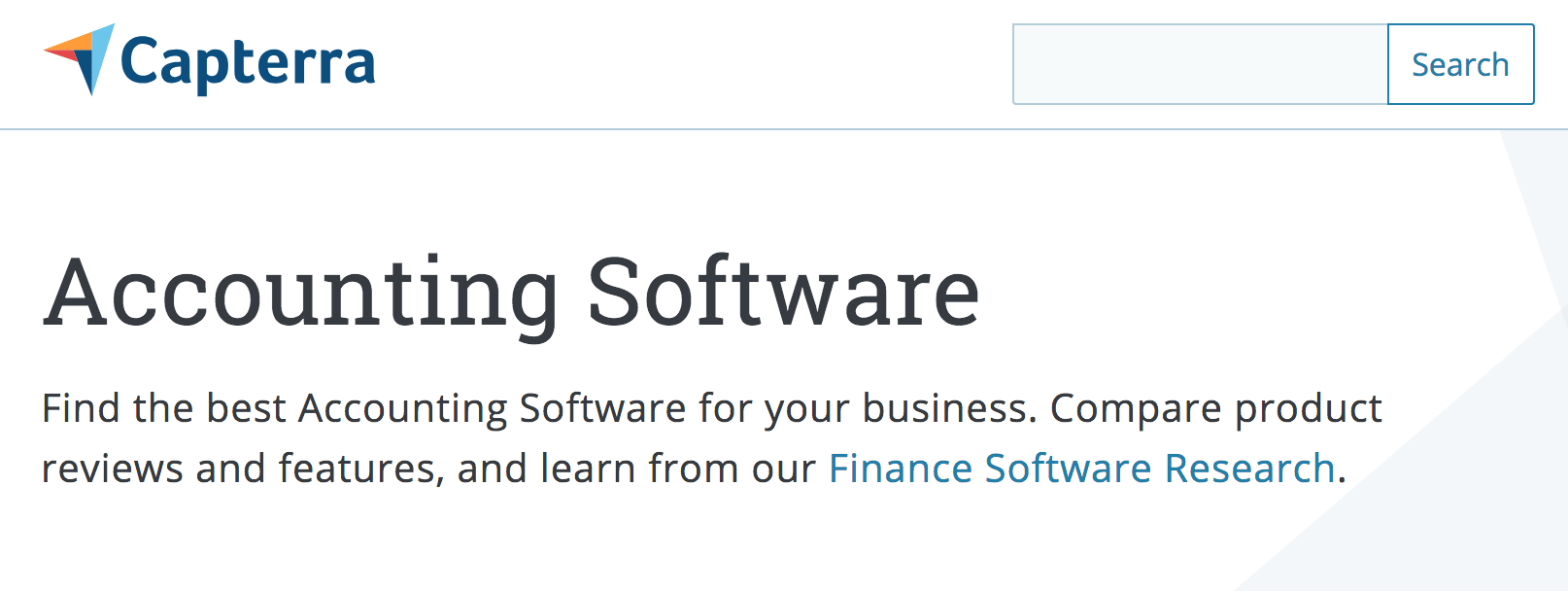
It could be something as simple as the accounting software you hate using at work. You know it inside out, you know why you hate it and this gives you enough knowledge to try alternative software and judge what makes them better/worse.
Or maybe you’re a photography enthusiast with a wealth of knowledge about different camera bodies, lens, accessories, software and all kinds of related products you’re constantly using.
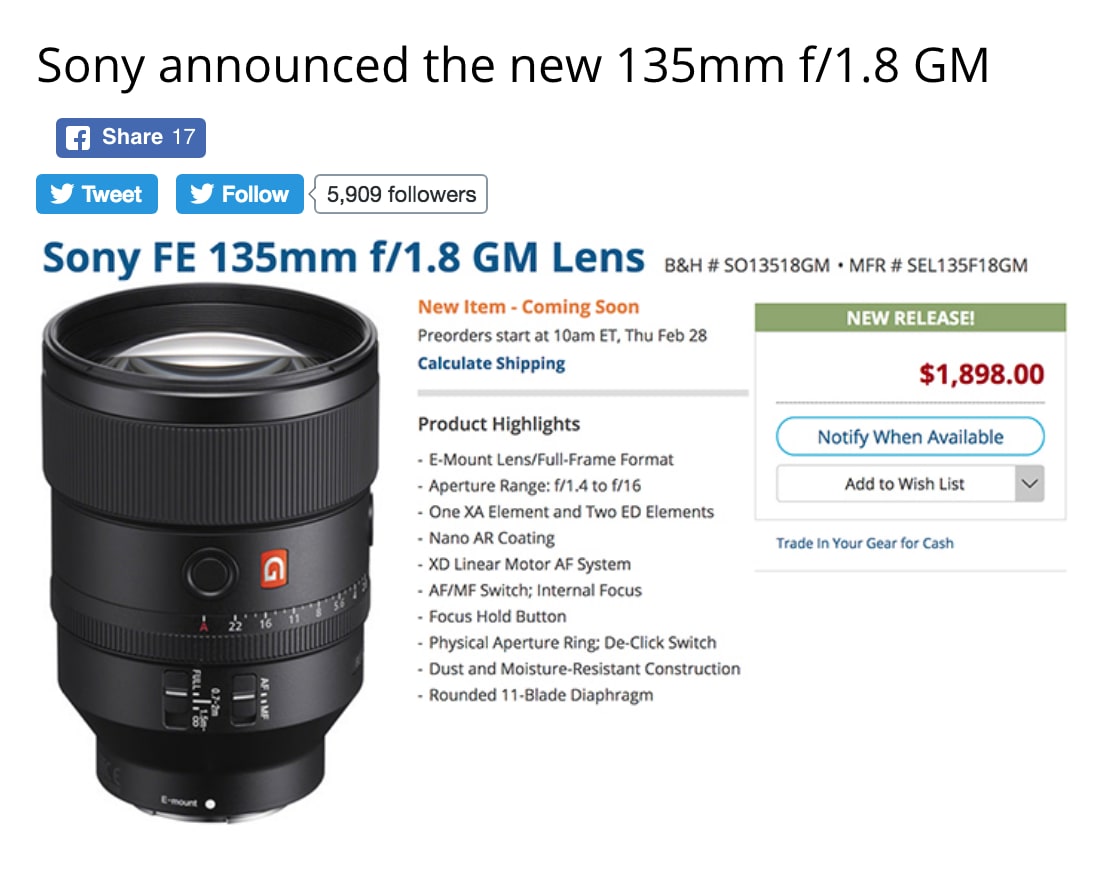
Affiliate marketing all comes down to having enough knowledge about the products you’re promoting to help less-informed people make better buying decisions. Or, at least make people feel like they’re making better buying decisions.
We’re talking about business owners who also hate their accounting software but don’t want to try 20 different options to find a better one. Or fellow photography enthusiasts who want to buy the ideal camera for them but don’t know where to start.
Your role as an affiliate marketer is to help people make buying decisions and the commissions are your reward.
Actively search for products in your niche (with affiliate programmes)
Once you’ve decided what your niche is going to be, you can start to pick specific products to promote. You should already have a list of potential products in mind and you can check their websites directly to see if they have an affiliate programme.
If they do, add them to your list of potential options.
If they don’t, then you’re not going to get any profit from recommending their products but you can still use the knowledge you have about them in your content (we’ll talk more about this later).
Once you’ve figured out which of your products do/don’t have affiliate programmes, it’s time to move on to the alternative options – the rival merchants.

Let’s say one of your affiliate products is a mobile POS (point of sale) system for small businesses. Your next move is to draw up a list of all of the other mobile POS systems designed for smaller businesses and then check which ones have affiliate programmes.
Suddenly, you’ve got an entire section of reviews made up of products you can earn commission from (recommend) and those you can’t (don’t recommend but still write about).
Next, move on to non-mobile POS systems for small businesses, related products small retailers are going to use (mobile card readers, payment processing software, etc.) and you’ve got an entire website’s worth of affiliate content on your hands.
Need more? Then move on to systems for medium-size businesses, enterprise businesses, other related products and go as far as you need to.
Start with the products you know and branch out from there, maximising your knowledge within your chosen niche.
Search affiliate networks

Once you’ve done some manual research and created an initial list of affiliate programmes to target, you may want to expand further (either now or at a later date).
Affiliate networks can be a powerful tool for achieving this.
Affiliate networks are platforms that connect merchants with affiliate marketers. This saves merchants from hunting out affiliates and saves affiliates from having to do the reverse – for a fee of course.
Some of the most popular affiliate networks are:
Affiliate networks are especially useful if you’re looking to add new products to an already-profitable affiliate site or you’re planning to manage multiple affiliate sites at once.
However, for new affiliate marketers, I would suggest starting with the manual approach mentioned above and then considering whether you want to use networks.
While affiliate networks can make it easier to find affiliate programmes, there are some common negatives that come with using them:
- You have to pay some of your commission to the network
- You have limited control over the affiliate programme
- Programmes may be cancelled without any notice given
- Accounts may be deleted without any notice being given
- PayPal payouts are often unavailable
- It’s a new platform to learn and manage
- Customer service can be poor
- Creating accounts (getting accepted) can be difficult
- Getting paid can also be difficult
Personally, I find affiliate networks are most useful for affiliate marketers who are working on a large scale. If you can afford to lose a little commission for the sake of more sales overall (assuming you can get the sales to begin with), then networks might work for you.
Likewise, if you’re willing to lose some money for the sake of experimenting with different programmes (they’re not all going to work for you), networks are a good tool for testing out new programmes. However, you’ll also need to accept some delays in getting paid, the risk of programmes being shut down without notice and some frustrations with using networks in general.
For new affiliates, who already face enough challenges with getting used to the industry in general, the cons of using networks can become too much and you can see how many negative reviews networks receive as a result.
If you know what to expect from them, how to use them and when to use them, they can be a valuable tool, though.
Choose your platforms to post affiliate content
With your affiliate programmes sorted, you need to decide where you’re going to promote your links. By now, you probably understand your website is going to be the focal point of your affiliate marketing strategy but this isn’t the only place you can promote your content.
Your blog or website
Yes, the majority of your affiliate content efforts are going to take place on your own website/blog. This gives you somewhere to send traffic from referral sources (search, social, third-party sites, etc.) and maintain full control over your content and affiliate links.
Your website is also your most important resource in terms of building a search presence, establishing yourself as an authority in your niche, creating email marketing lists and segmenting traffic to increase the likelihood of them purchasing products after they click through to your merchant partners’ sites.
Your aim is to create a complete resource of information for your target audiences so they can find all the buying advice they need to make purchases with confidence.
This confidence is crucial for maximising your affiliate sales and commissions.
Email marketing
Another key role your website plays is giving you a platform to build and increase the purchase intent of your traffic. When people first land on your site, they’re probably quite far from making the purchase and the chances of you earning affiliate income from them is relatively low.
You don’t just shrug your shoulders and hope the next visitor is more likely to click through and buy, though. You’ve worked hard and paid good money to attract these visitors, so you’re going to do everything you can to make these users more likely to click through and buy – even if they don’t do it right now.
To do this, you’re going to give users incentive to sign up for your email newsletter, download your in-depth guides (e.g.: comparing different products), sign up for voucher coupons, watch your webinar, etc.
This gives your users high-quality content tailored to their interests and you get their email address in return, which you can use to reach out to them, learn more about their needs and guide them along the path to purchase until they’re ready to buy.
YouTube
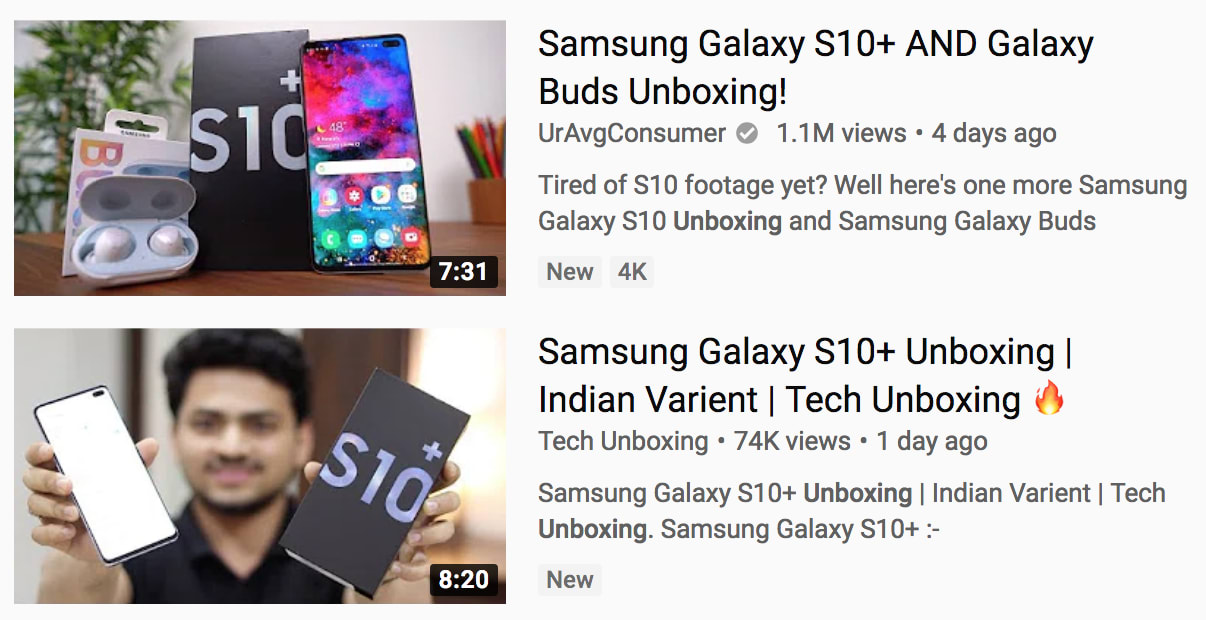
According to research from Think with Google, 62% of consumers watch video product reviews before making a purchase. At the same time, the search giant says product unboxing videos have become one of the biggest influencers in consumer electronic buying decisions.
Even if consumer electronic products aren’t part of our affiliate marketing plans, publishing content on YouTube and other video platforms should be.
You don’t need to be spending huge amounts of money on Oscar-worthy footage, either. Some of the most successful affiliate marketers on YouTube simply film themselves using products, screen-grab software demos or sit there unboxing products for their viewers to see.
Aside from being the world’s second biggest search engine, YouTube also comes with some great features to help you maximise affiliate sales – including links that appear over your videos at the crucial moment.
Your social platforms
Your social media platforms are another crucial channel for promoting your affiliate products and there are two ways you can go about this:
- Promoting your affiliate content organically
- Promoting your affiliate content with paid ads
The key word in those two bullet points in “content” because most social networks aren’t going to allow you to post affiliate links directly. Some do, but most don’t – and this isn’t the best way to go about affiliate marketing on social anyway – so don’t worry about it.
Instead, you’re going to use social media to promote your bog posts, guides, email sign-up content, webinars and everything you publish to help people make the right purchase for them. The goal here is not to increase affiliate sales directly; it’s to increase the number of visitors engaging with your content.
This will result in more affiliate sales down the road, though, as you’re bringing in more traffic, providing more people with quality content and addressing their needs, instead of simply trying to force the sale out of them at the first interaction.
Build an audience large enough for affiliate marketing
If you’ve already got a blog with a large audience of new visitors coming in every day, then you’re in a great position to start affiliate marketing – as long as you can fit your strategy into the interests of your existing audience.
In most cases, though, new affiliate marketers have to start from scratch (or very little) with building an audience, so here’s a step-by-step guide on how to the traffic you need.
Step #1: Create the best content in your niche

This really is the most important part of any affiliate marketing strategy and the more effort you put into creating the best content within your niche, the better your results are going to be.
The more competitive your niche is, the more important it is that you’re able to produce better content than your rivals. Great content is how you’re going to rank well in search engines, encourage people to share your content and build the kind of authority/trust you need to influence buying decisions.
So what makes great affiliate content?
Glad you asked.
- Audience-centric: Consider your audiences’ needs to be just as important as your own affiliate marketing objectives.
- Knowledgeable: Above all, great affiliate content needs to be knowledgeable enough to give people genuine advice.
- Genuine: Let’s just emphasise the word genuine because content that dishonest, makes false promises or blatantly lies to people is going to get called out pretty quickly.
- In-depth: People want to learn more about the products they’re interested in – so don’t scrimp on the details.
- Critical: Don’t just tell people how great your affiliate products are; tell them the flaws and help them decide whether these are a problem for them.
- Useful: In most cases, people are going to read your affiliate content because they want help with making a purchase choice – so make sure you achieve this goal for them (or whatever other content goals you might identify).
- Accessible: For any kind of content to succeed it needs to be accessible on the platforms your target audiences are active on.
- Impartial: This might sound like a contradiction of terms but its perfectly possible to be an impartial and successful affiliate marketer. You shouldn’t aim for anything less.
- Trustworthy: Why is impartiality important? Because the web is filled with content trying to sell people stuff and it’s incredibly difficult for users to know who they can trust.
- Gets results: Aside from ticking off everything else on this list your content also needs to get the results you’re after (traffic, affiliate sales, ROI, etc.)
Creating the best content in your niche is going to do two things: First, it’s going to help you build the largest possible audience via search and social, but it’s also going to convince a larger percentage of that audience to buy from your affiliate partners.
Don’t be afraid to write about products you’re not promoting or criticise those you are when it’s necessary. There’s no such thing as a perfect product and people understand they’re only going to get so much for their money – it’s about helping them make the best decision based on their needs.
Be honest and talk about the pros and cons of every product in your content, whether you’re promoting them or not. The trick is to go into more detail and explain who these pros and cons matter to. Your audience is going to comprise of people with different expectations and some features are going to be crucial while certain cons won’t matter all that much.
Use this to your advantage and create affiliate content that recommends the best products for different audiences. Know who your products are really most suitable for (small businesses, large businesses, pros, amateurs, etc.) and make it clear that some products are better for them than others.
You can always find alternative affiliate products to suit other audiences and add them to your strategy at a later date.
Step #2: Build your organic search presence
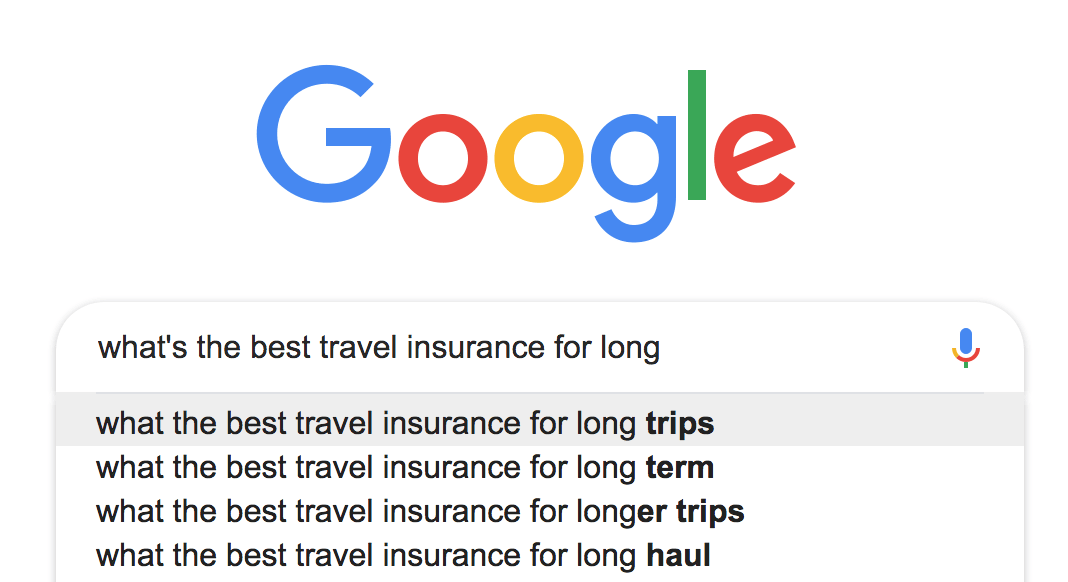
When people need information about products or buying advice, search engines are normally the first place they turn to. Having your site regularly appear at the top of search pages for these queries is going to generate a large volume of free traffic – the biggest asset to your affiliate marketing strategy.
One of the most important factors in ranking well in search engines is the quality of your content, which reinforces the need to produce the best content in your niche.
On a technical level, content that delivers quality and helps your audience make better buying decisions is going to earn more links from readers and third-party sites. These links are absolutely vital for establishing a strong search presence – one of the top three ranking factors in Google’s algorithm (content is another one of the top three).
Here are the other key areas you need to think about:
- Your niche: The more effectively you define your niche, the easier it will be to create content for specific audiences, target them effectively and get your content seen by the right people.
- Keywords: In terms of targeting, knowing which keywords your audiences are searching for and providing the best content for those queries is everything.
- On-page SEO: Make sure you know the fundamentals of on-page SEO so every piece of content you publish has the best chance of ranking well in search engines.
- Technical SEO: You also need to have the technical aspects of SEO nailed – from sitemaps and robot.txt files to link profiles and redirects.
- Loading times: low loading times are one of the fastest ways to kill your search presence and prevent people who do visit your site from returning.
- User experience: Google cares a lot about user experience (especially on mobile) and your visitors are going to care about it even more.
- Mobile optimisation: Most searches now take place on mobile, which means you need to offer great experiences to users on all devices types.
Aside from these core essentials, you should also look into structured data, which gives Google more information about your content. This allows the search giant to pair your content with more relevant audiences (which improves your chances of getting affiliate sales) and means your content can appear as rich results in search (which boosts click-through rates and increase your overall traffic numbers).
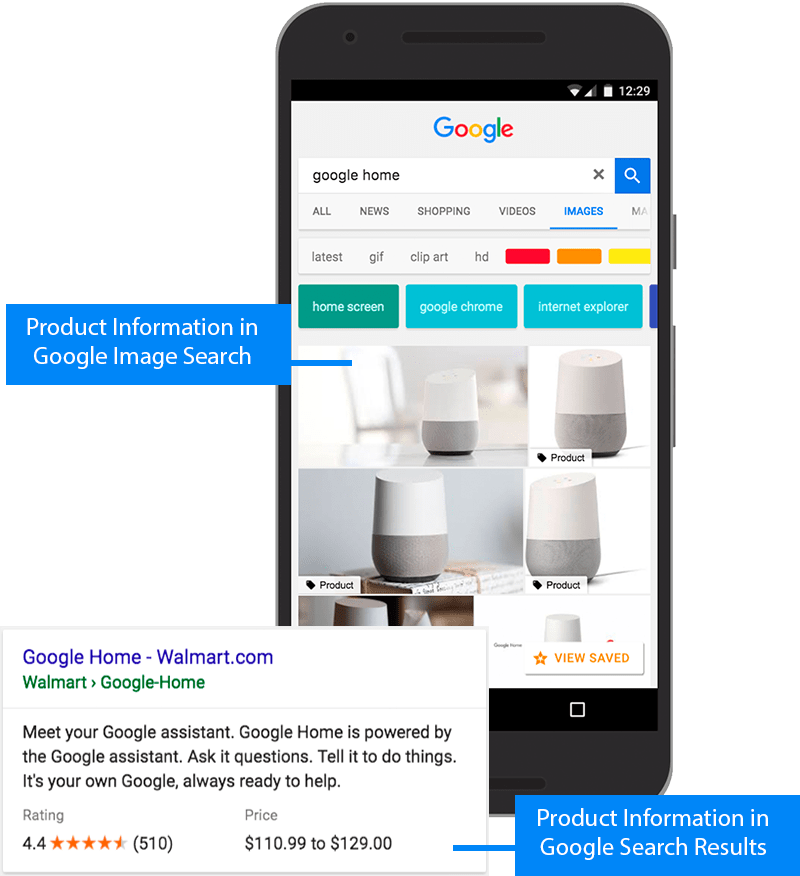
Something else you want to be optimising for in 2019 is featured snippets in Google Search. These bump you right up to the top of results pages and give users a better idea of what your content is about.
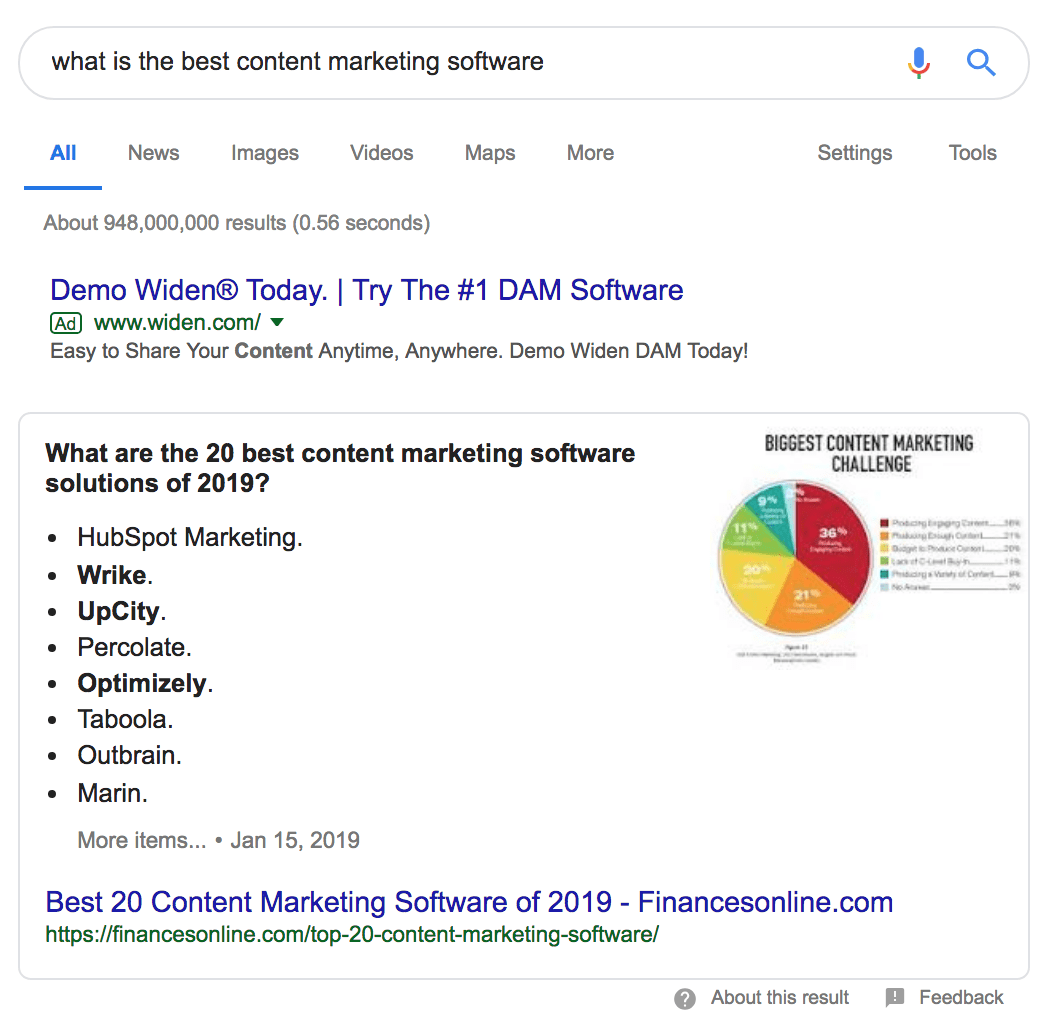
The growth of featured snippets is another reason why you need to be creating the best content in your niche and building a strong search presence.
Step #3: Promote your content with PPC ads
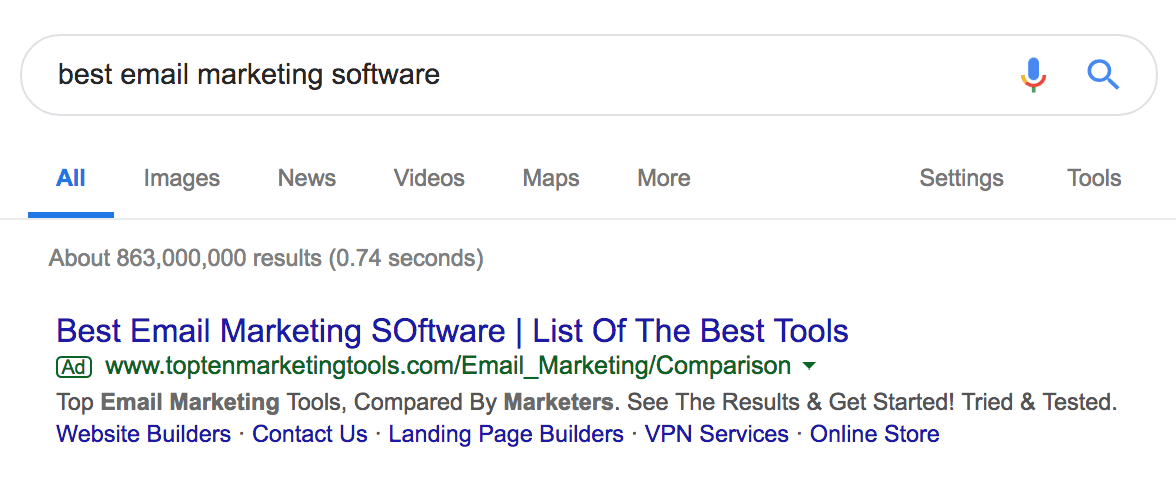
Estabishing a strong search presence is one of your affiliate marketing priorities but it takes time to build your organic search ranking. Paid advertising gives you the option to pay for traffic from day one.
This can be a great way to generate the traffic you need to get things moving but you’re going to have to pay for the privilege – quite possibly more than you’re going to earn from commissions early on.
Keep in mind that you’re paying for every visitor that lands on your site via paid ads (regardless of whether they then click on your affiliate links, let alone purchase from your affiliate partners).
Basically, making PPC work for your affiliate marketing strategy is a complex procedure – but it can be done.
Above all, you need to be willing to spend time and money experimenting until you find a profitable PPC strategy. You’re probably going to lose money at first and you’ll need to accept this as part of the process if you want to use PPC as an affiliate marketing channel.
The biggest problem is you’re paying for traffic that probably isn’t going to buy the first time they visit your site (let alone your partner merchants’s sites). However, one strategy that can be highly effective is forgetting about affiliate sales and focusing on turning your PPC traffic into email marketing lists.
If you go for bust and try to convert your PPC traffic into buyers right away, you lose everything in the majority of cases where visitors don’t pay up. However, getting them on your email marketing lists gives you the opportunity to keep working them as leads and gradually bring them close to the sale.
Email marketing is the most cost-effective channel for doing this kind of ongoing lead nurturing, too, and you can automate most of you strategy to do the legwork for you.
So instead of pushing your PPC traffic to pay up right away, create ad campaigns that promote your affiliate content and landing pages that encourage users to sign up to your email lead-gen strategies.
This gives you the multiple touch points you need to maximise your affiliate sales from PPC traffic.
Step #4: Drive traffic from social media
Social media is another powerful tool for building your audience and, once again, the aim is to promote your content rather than go for the sale directly.
Choosing the right networks to promote your content is crucial and there are two key things you need from a social network. First, you need your target audiences to be using the network and, second, you need to be able to produce the kind of content they’re engaging with on that platform.
Here’s quick summary of the top networks:
- Facebook: The all-rounder that allows you to reach millennials and baby boomers of all professions and interests with its excellent targeting options – as long as you’re able to create visually engaging content (images and videos tend to work most effectively).
- Instagram: A slightly younger audience than Facebook and more B2C-focused (Facebook is very good for B2B and B2C) but with all the same excellent targeting options. You really need to nail the visual content – especially images, videos and stories.
- Twitter: A fast-paced network that excellent for building audiences (B2C and B2B) but you have to work hard to keep them engaged. Visual content isn’t so vital but you will want decent title images for your blog posts at the very least.
- LinkedIn: The social network for engaging with professionals and top of the list for B2B affiliate marketers. By far the least demanding network in terms of visual content but also one of the most expensive for advertising.
- Medium: An excellent place to get your content seen by large audiences and build brand awareness (you can even include affiliate links on some publishers’ Medium sites – as long as they’re useful to the article itself).
There are plenty of other social media networks out there you could potentially use to grow your audience but these are generally the best places for affiliate marketers to get started.
Facebook is a great network if you’re interested in social advertising but it’s quite poor for organic reach these days, which limits its use for affiliates.
Instagram, on the other hand, still makes it possible to build a decent audience (with time and efforts) organically. You also have the option of advertising on Instagram with all the same excellent targeting options available on Facebook to help you pinpoint highly specific audiences.
Twitter is by far the best place to reach a wide audience organically and you can get results almost right away. The problem is you have to be very active and responsive on the network to turn this audience into valuable traffic. In terms of advertising, Twitter is expensive and the network is really struggling to make ads work on the platform.
Then we have LinkedIn, the truly B2B social network where you can reach professionals who are also there to network and sell to fellow pros. Organic reach is still possible but ads are quite expensive – too pricey for most affiliate marketing strategies.
Step #5: Network with other sites
Medium was mentioned in the last section and the network is a great place to find publishers with large audiences – many of whom need fresh content. If your content is relative and useful enough to their audience, you can often reach out to these publishers with your content and get it published on their site.
This opens you to an entirely new (and hopefully large) audience who have an interest in the kind of content you’re regularly publishing on your blog.
The goal here is to make these people aware of your site and give them reason to pay a visit, increasing your audience and potential affiliate income. You’re not limited to Medium’s network, either – there’s an entire internet’s worth of publishers out there.
Find the ones with audiences that might be useful to you, provide them with the content they need and build attract new visitors who might be interested in your affiliate products.
Maximise your affiliate marketing income
Once your affiliate marketing strategy matures, there comes a point where your income stops increasing and pretty much levels out. Hopefully, this happens after you reach your initial profit target but it can often happen before you get there.
Either way, once your affiliate income reaches a plateau, you need to start optimising your strategy to squeeze every bit of performance and maximise profit.
The importance of KPIs and metrics in affiliate marketing
As with any kind of marketing strategy, the only way to know how well yours is working is to track the right KPIs and metrics. However, the data you really need to focus on as an affiliate marketer is a little different to what marketers with different goals care about most.
First, your most important KPIs are always going revolve around your income:
- Profit: This is a specific number (not a percentage) that tells you exactly how much profit you’re making after all expenses – the most important KPI in your affiliate marketing strategy.
- ROI: Return on investment is often billed as the most important metric and it’s certainly important. However, a 1,000% ROI from $1 is still only $1,000 and this isn’t going to set the world alight.
- Total income: Of course, it’s also important to keep track of your total affiliate income – as long as you keep your expenses in mind to be sure you’re earning significantly more than you’re spending.
- Spend: Make sure you also keep track of your expenses individually (content, freelancer fees, ad spend, etc.) so you can measure how increasing your investment affects your return (hopefully, the more you spend, the more you make).
- eEPC: Effective earnings per click tells you how much you’re earning per click of each affiliate link (normally per 100 clicks). This helps you identify your best performing links and test new content ideas or audience segmentation techniques to see if you can increase your earnings.
- Payout: How much you earn for each sale and you want a figure for your average payout across all programmes as well as figures for each individual programme.
- CPC: Cost per conversion tells you how much you pay on average to get one affiliate sale for each programme, link or both – depending on how you measure it. You can cmpare this against the income you make from each programme/link to keep your profit margins on target.
Those are the most important performance indicators (KPIs) for your affiliate marketing strategy but there are various other metrics that you can use to track performance on a more granular level:
- Traffic: How many people are visiting your site on a monthly basis.
- New visitors: How many of these visitors are seeing your site for the first time.
- Affiliate traffic: How many visitors you’re sending to your affiliate partners’ sites.
- Conversion rate: The percentage of users who buy the products you’re recommending after clicking through to your partner’s site – total visitors sent vs number of commissions earned.
- Search CTR: Your click-through rates from search tell you how many users click on your on your organic search listing when it appears (ie: how compelling your titles and snippets are).
- PPC CTR: Tells you how many users click your PPC ads when they see them (ie: how compelling your ads are).
- Affiliate link CTR: Tells you how many people click the affiliate links in your content after clicking through to your page – this might indicate how effective your content is at convincing people to click through and/or how good a job you’re doing of targeting people who are ready to buy.
- Bounce rate: The percentage of visitors who leave your website before visiting a second page. If your bounce rates and affiliate link CTRs are both high, this suggests you’re doing a good job of sending affiliate traffic to your partners. If your bounce rates are high and your CTRs are low, it suggests people are leaving your site and back to Google (or wherever else they came from).
- Time on page: Gives you an idea of how long people spend on your pages and how engaging your content is.
- Loading times: Yes, these are so important you need to track and see how times affect other key metrics – bounce rates, affiliate link CTRs, time spent on page, etc.
You need to identify the KPIs and metrics that matter most to your affiliate marketing strategy as soon as possible. Ideally, you’ll do this before you even get started or, at least, before your content starts generating serious volumes of traffic so you can collect enough data to make informed decisions by the time you start optimising to maximise performance.
First, optimise your website for performance
Assuming you’ve got the right metrics in place to measure how well your website is performing, this is the first place to start when you want to maximise your affiliate income.
Your goals here are to do the following:
- Keep visitors on your page for longer
- Get more visitors to click your affiliate links
- Get more visitors to sign up to your email marketing campaigns
- Increase the number of people linking to your pages
You’re not looking to increase traffic with any of these goals; you’re looking to turn more of your existing traffic into visitors that do something valuable on your website.
How do you do this?
Well, you could start by reducing your loading times if it takes longer than 2 seconds for your pages to load on mobile – according to research from Google, more than half of users will abandon your site it if takes longer than 2-3 seconds to load.

In fact, you could aim to improve the mobile experience of your site in general, as this is where a lot of people are going to encounter your website for the first time.
It’s also worth testing new content ideas and formats that might increase the number of users clicking your links. While, speaking of links, you should also consider how you implement them in your content – are you simply embedding links in text or do you have some kind of call-to-action (CTA) on your pages?
It’s worth developing a knack for designing CTAs, too – even if you don’t use them for your affiliate links – because you’ll certainly need them to maximise your email sign-ups.
Now, optimise your traffic generation strategies
With your website fully-optimised to make the most of the traffic coming to your site, it’s time to increase the number of visitors landing on your pages.
In most cases, there are tree main sources of this traffic:
- Organic search
- Paid search
- Social
Here are some suggestions to get you started.
SEO: Boost your organic search presence
Optimising your organic search strategy is something you’re going to need to do over time and you’re probably not going to to see major changes (unless there’s a particularly nasty Google algorithm update) but you do want to experiment with different content ideas and formats.
The best content for SEO purposes is normally one of two things: evergreen content that stays relevant and useful for many years (with some occasional updating) and fresh, new content that offers the latest info.
You want to find the right mix of both and determine the most effective mix of content formats for your audiences (blogs, videos, case studies, etc.).
Once your site is a complete, general resource for people interested in the kind of products you’re promoting, it’s a good idea to start publishing content that really hones in on specific interests. Start by looking at long-tail keywords being typed into Google by large numbers of users and create content that answers their needs.
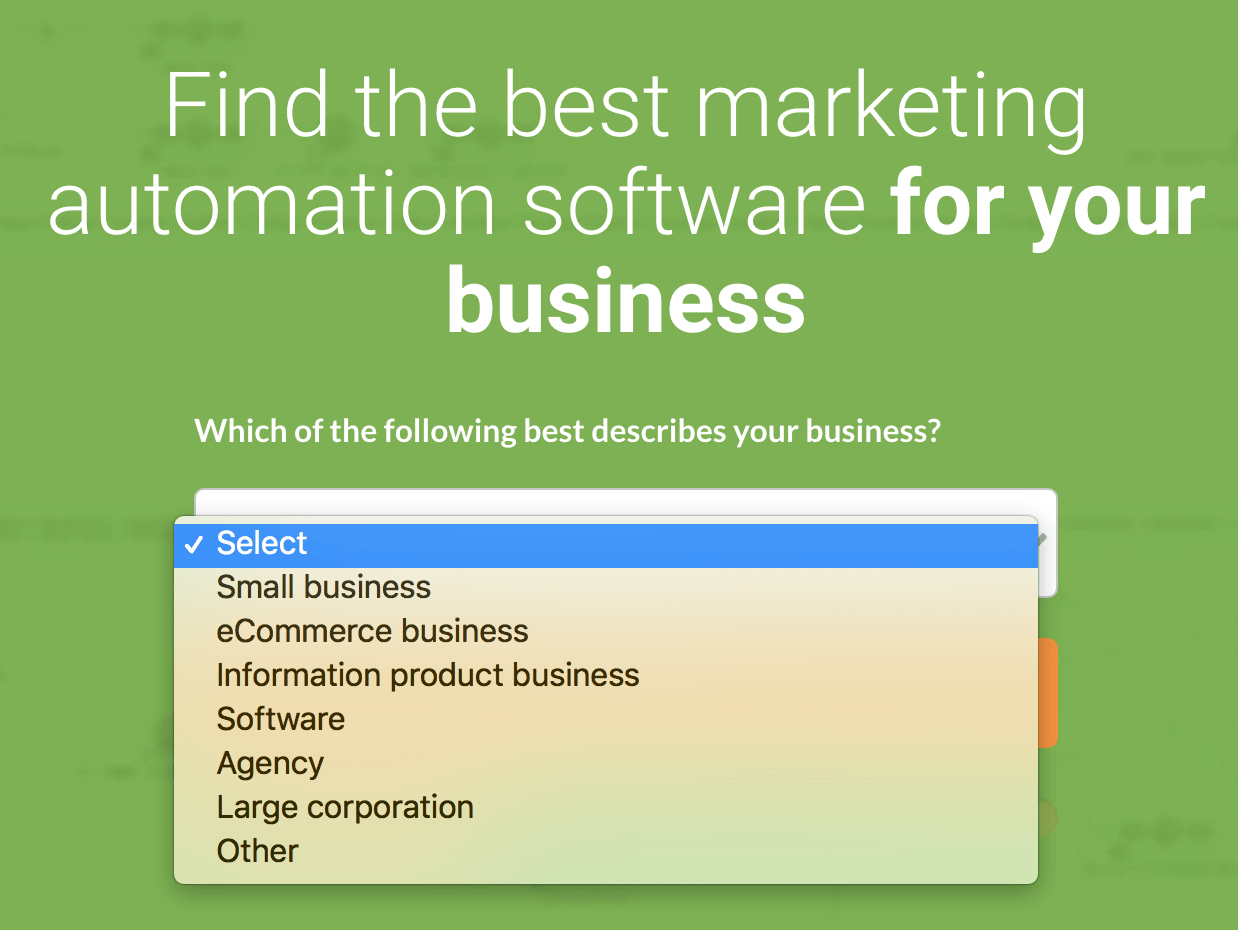
Next, break your target audiences into more specific segments. Let’s say small business owners are one of your key target audiences and a lot of your articles have titles along the lines of best [product category] for SMEs. Break this small business audience into more specific segments: small online retailers, brick-and-mortar businesses, entrepreneurs, small businesses selling internationally, etc.
The more specific you can be, the more valuable your content is going to be to those specific audiences.
Paid search: Optimise those campaigns
As I said earlier, paid search is a tricky game for affiliate marketers and you’re really going to need to optimise those campaigns if this is a channel you want to use to use for traffic generation.
You’ll need to keep a constant eye on your ad spend and the cost per click (CPC) of each campaign and make sure your affiliate profit is still on target. You can reduce your CPCs in Google Ads by improving the relevance of your ads, increasing your Quality Score and optimising your bids.
You’ll also need to segment your PPC data from your organic search traffic to see how many of those paid clicks are signing up for your email marketing campaigns or clicking your affiliate links.
If you’re using paid search to boost your email marketing efforts (as I recommend earlier), then you need to measure campaign performance against email sign-ups and your conversion rates for email.
Social: Organic vs paid
Optimising your social channels to increase traffic requires a different approach for each network. With Facebook and Instagram, it’s almost impossible to generate traffic or email sign-ups at volume without paying for ads.
The good news is CPCs are generally cheaper than Google Ads and the networks’ targeting options are incredible for pinpointing specific target audiences.
Instagram can also be great for reaching a wider audience (even organically with the right kind of campaign) and this might result in more traffic coming to your site.
Twitter will often be the best source of traffic among social platforms but you’re going to need to automate a lot of your posts and be quick with your responses to comments. Optimising your Twitter strategy for traffic generation is going to be all about minimising the manual workload of being active on the network.
Ads are expensive on Twitter, though, and you’re going to have the same problem with LinkedIn, which can also be difficult to generate traffic from.
Optimise your affiliate programmes
Once your inbound marketing strategies are bringing in more traffic and your site is optimised to maximise affiliate income, it’s time to turn your attention to the affiliate programmes you’re signed up to.
There are two key things you want to do here:
- Increase the commission you earn from each click.
- Increase the percentage of users who buy after landing on the merchant’s page.
As Venture Harbour CEO Marcus Taylor has explained before on our blog, the first thing to look at is affiliate programmes that offer higher commissions.
When I began affiliate marketing, I promoted products ranging from $0.10 commissions to $100 commissions. It soon became clear that, while having a large volume of low commission sales can create a solid foundation for your affiliate revenue, true growth comes from high commission sales.
Venture Harbour CEO, Marcus Taylor
In most cases, this means signing up to affiliate programmes for products that are more expensive than the ones you currently promote. However, you may also be able to negotiate a higher commission if you can prove to your existing partners that you’re generating a lot of business for them.
For the most part, though, you need to move yourself up the affiliate ladder.
If you’re currently generating $1k per month, what products will get you to $10k? If you’re at $10k, what do you need to do to get to $100k?
Venture Harbour CEO, Marcus Taylor
As Marcus says, this probably means you’ll need to reassess which products you’re promoting:
The answer is usually quite simple: you have to add an extra zero onto the size of your commissions or the amount of traffic you send to publishers. More often than not, this requires a refocus on which products you promote.
Venture Harbour CEO, Marcus Taylor
This doesn’t mean you need to replace your existing content or abandon those affiliate programmes, though. A lot of those small business owners aren’t going to want to add another zero onto the price they’re paying but you can add a new target audience of bigger businesses to your strategy and make them the focal point of your new content.
Automate everything you can
Everything we’ve looked at so far has involved a lot of manual work and it’s important to go through all of this as a new affiliate marketer so you can learn the ropes.
However, sooner or later, you’re going to want to start automating as much of your affiliate marketing strategy as possible. Here are five parts of your affiliate marketing strategy you can automate right away:
#1: Email marketing
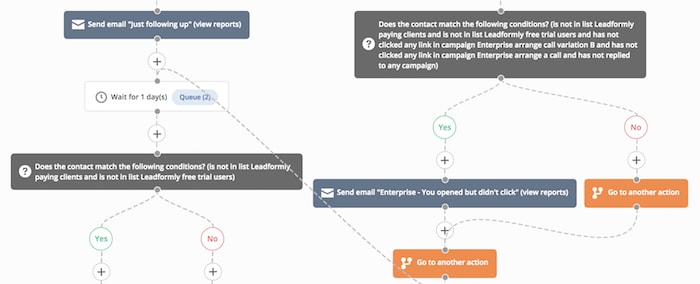
Email marketing is the most cost-effective channel you have for capturing traffic before they’re ready to buy and nurturing them towards the affiliate sale.
It’s also one of the most suitable channels for automation and, with a tool like ActiveCampaign, you can pretty much automate your entire email marketing strategy.
By creating audience segmentation lists (based on the reason people sign up and how they interact with your emails), you can target users with content that addresses their needs as they move along the consumer journey, pointing them towards your affiliate products as their purchase intent increases.
#2: On-page lead segmentation
The biggest problem with automating email marketing is the first email that goes out – those generic messages that don’t really address user needs and instantly start by asking more information about people or start promoting right away with generic offers.
It doesn’t need to be like that, though.
The people on your email list sign up for a reason and the more information you have about this reason (and the earlier you’re able to get it), the more relevant and effective your follow-up messages are going to be.
How early?
Well, we use Leadformly to segment our email leads on our website – before they even click the CTA button – thanks to its multi-page form designs. Built with a technology called conditional logic, these forms ask users about their needs and expectations as they sign up, which you can use to send them more relevant messages from the very first email.
#3: Social media posts
Promoting your affiliate content on social media is crucial for maximising your audience but manually posting on all of those platforms is incredibly time-consuming.
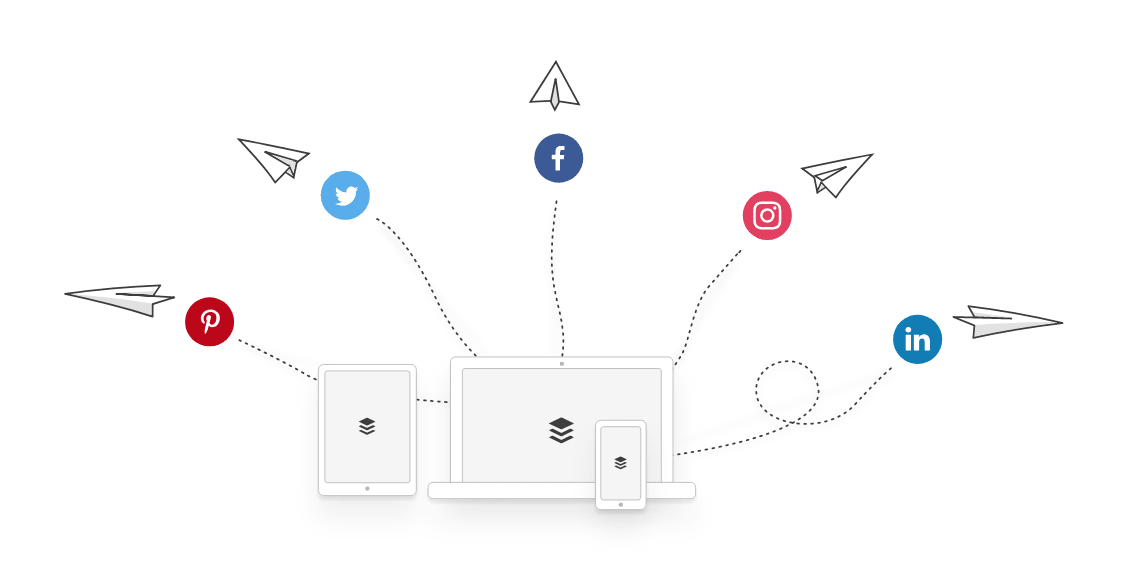
Buffer allows you to automate everything you don’t need to do manually and allows you to manage all of your accounts from a single place – as well as get analytics data for all of your social networks.
#4: Proofreading
All that content you need to create results in a mountain’s worth of proofreading and there’s only so much the human eye (and) brain can take.
Grammarly is an excellent tool you can use to help spot basic spelling and grammar mistakes – the kind that are all-too-easy to miss as you re-read your own content. It’s not going to fix all of your writing problems but it will help you create better content more quickly.
#5: App integrations
As the number of apps you use to manage your affiliate marketing campaign increases, the more time you spend doing time-consuming tasks between them – e.g.: saving Gmail attachments to Google Drive, scheduling your blog posts in Buffer or adding leads to ActiveCampaign from other apps.
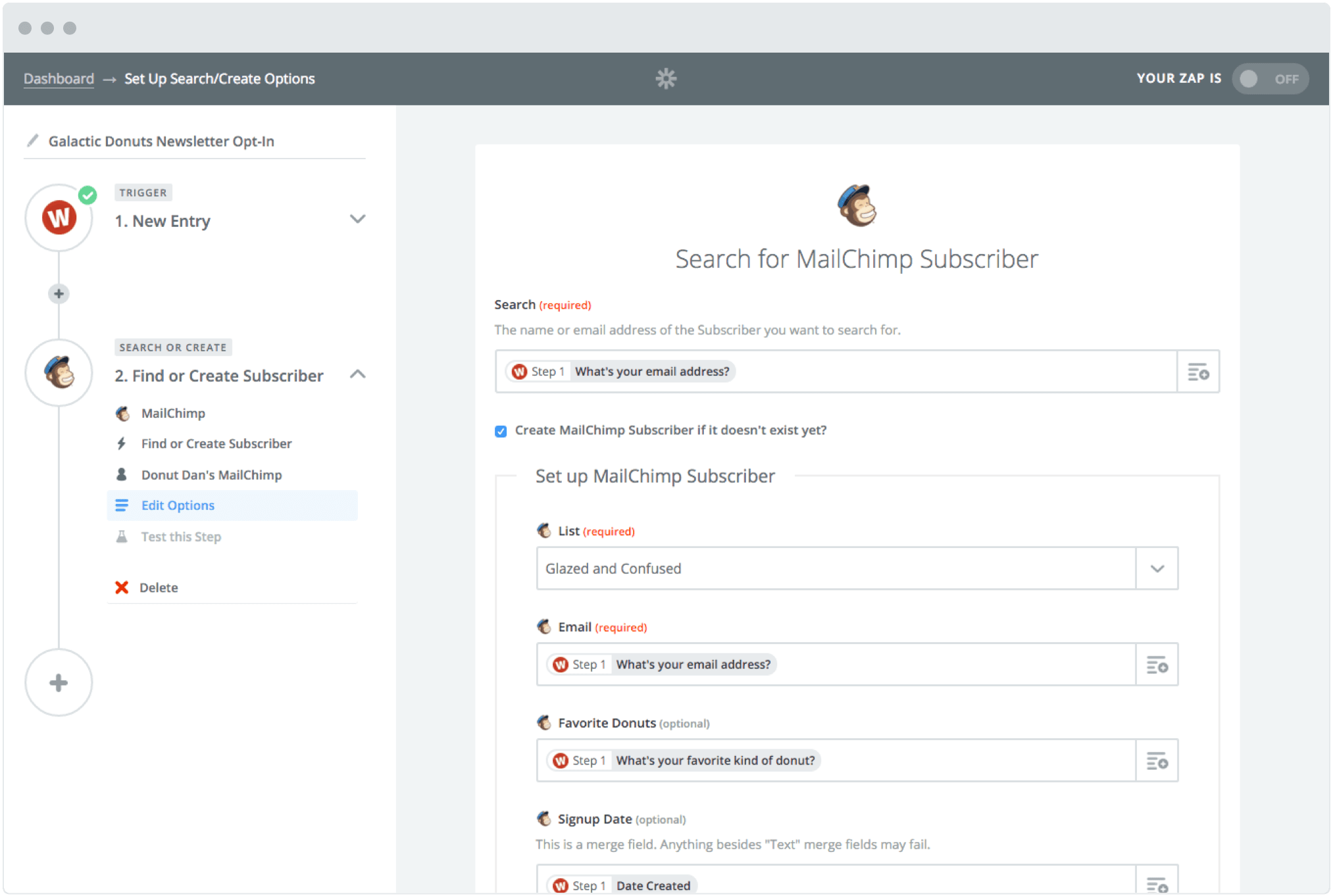
Zapier is a wonderful integration tool that connects more than 1,000 of the most important business apps, allowing you to automate tasks like these, so you never need to manually save another email attachment to Google Drive, Dropbox or wherever you want them.
Automation technology has really come a long way over the past few years but there’s a more human alternative to automation that’s worth remembering: outsourcing.
After all, the machines aren’t quite ready to write industry-leading content or make those product review videos for you. Some things simply need that human touch and knowing when to outsource tasks (normally becasue your own time is better spent doing something else) is crucial.
Whether it’s outsourcing your marketing strategy to an agency, hiring freelancers to create all of that new content for you or simply getting an assistant to take care of the paperwork – the less you need to do yourself, the more you’re going to enjoy the perks of being an affiliate marketer.
Of course, outsourcing doesn’t come for free so you’re going to have to factor this into your expenses and make sure those ROIs and profit margins are still heading up.
Expand your affiliate empire
If you successfully implement everything we’ve covered in this article so far, then you should have a highly profitable affiliate marketing strategy making money for you.
Congratulations.
However, there’s still plenty of room to expand your affiliate empire and increase profits further.
Interested?
Yeah, of course you are.
If you feel like you’ve maximised your traffic potential and earning from your affiliate programmes (or close to it), it might be difficult to get more from your existing website.
You could increase revenue by adding more affiliate programmes that are related to your existing ones – as long as they don’t compete with your current products – but you’re still limited to what you can do with one site.
To build your own affiliate empire, you’re going to need to start all over again and create new sites, targeting new audiences and multiplying your affiliate income with completely new programmes.
What you don’t want to do is compete with your existing website and hurt its performance in any way. So your additional affiliate sites need to be different enough that they don’t steal affiliate sales away from the same target audience you’re already monetising.
However, your new sites can be related to your first one and you can make use of your existing online presence and traffic numbers to give your new sites a boost.
For example, if your first site specialises in e-commerce platforms, you might decide to add a site that focuses on hosting services or online payment services – other non-competitive products/services your existing audience is going to need.
As your affiliate empire grows, you can continue to add and optimise new affiliate marketing programmes, increase traffic numbers with every site and multiply your affiliate income.
With every new site you can implement the lessons you’ve learned with previous ones and the optimisation strategies you’ve discovered along the way, making it easier to get results with every new site you build.
Now, it’s your turn
With everything we’ve covered in this guide, you should be ready t start your own affiliate marketing adventure. To summarise the key takeaways (and help you avoid the mistakes most new affiliates make), here’s a round-up of everything you’ve learned from this article:
- Content is everything in affiliate marketing – don’t publish anything but the best content in your niche.
- Start with the products you already know and love – you can add more affiliate programmes to your strategy later.
- Plan your way to affiliate marketing success – know exactly what your targets are (profit, income, traffic, etc.) before you get started and how to measure success along the way.
- Hit profitability and then start optimising: Once your first site starts hitting targets, start focusing on maximising performance by optimising every stage of your affiliate strategy.
- Automate everything you can: Don’t waste time manually doing tasks that can be automated.
- Expand your affiliate empire: To cement your position in the industry, expand your affiliate empire with new websites promoting different (but potentially related) products.
Make sure you bookmark this article as a resource to keep coming back to and be sure to take a look at our other posts on affiliate marketing, email marketing, automation and everything else you need to get the best performance from your strategy.




